Gayle Irwin's Blog, page 15
September 5, 2018
what is pet ownership responsbility?
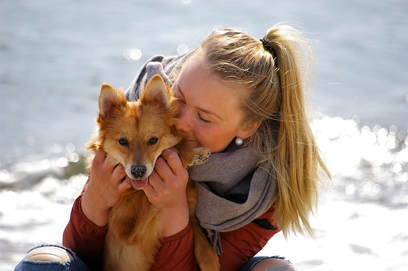 September can be considered Pet Ownership Responsibility Month, with the American Kennel Club designating Saturday, September 8, as Responsible Dog Ownership Day.
September can be considered Pet Ownership Responsibility Month, with the American Kennel Club designating Saturday, September 8, as Responsible Dog Ownership Day.What does pet ownership responsibility mean? First, it means more than simply providing food and water to your dog or cat. Not doing that basic is illegal and is called neglect. But, is it neglect if you only provide food and water and don’t provide attention and interaction with your dog, leaving him or her on a chain under a tree all day? In some places, yes, in other places no.
For those of us who love our pets, it’s a no-brainer to provide them with shelter from wind, rain, snow, and heat, and to interact regularly with them – sitting on a couch watching TV, taking walks and hikes, playing with toys, going for drives, etc.
How can all of us be more responsible pet owners? Hop over to this article posted on the American Veterinary Medical Association website and learn how we can be more responsible toward our furry friends and how we can educate others how to be as well.
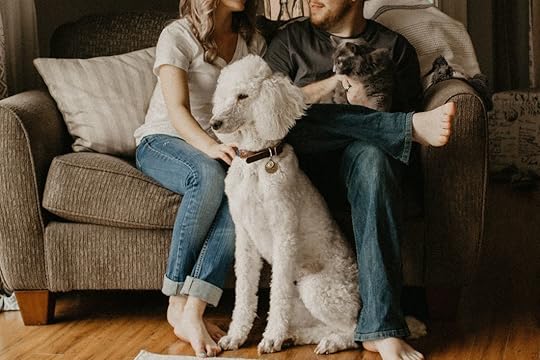
Published on September 05, 2018 09:28
August 27, 2018
AUTUMN TRIP IDEAS FOR YOU AND YOUR PET
 Fall foliage – reds, oranges, yellows – will soon spring to life. The end of summer vacations and the start of autumn adventures occur soon with America’s Labor Day weekend, September 1 – 3. As sunsets start earlier, temperatures become cooler, and the leaves of trees and shrubs turn more colorful, the new season of fall beckons walks, hikes, and trips in the car. Where might you and your furry friend enjoy going this fall? Here are a few ideas for travel in America:
Fall foliage – reds, oranges, yellows – will soon spring to life. The end of summer vacations and the start of autumn adventures occur soon with America’s Labor Day weekend, September 1 – 3. As sunsets start earlier, temperatures become cooler, and the leaves of trees and shrubs turn more colorful, the new season of fall beckons walks, hikes, and trips in the car. Where might you and your furry friend enjoy going this fall? Here are a few ideas for travel in America:New England and Mid-Atlantic States – from Maine through New England to the Great Smoky Mountains, a palette of vivid colors splash nature’s canvas. The leaves of hardwood trees, like maples and oaks, turn vivid shades of red, orange and yellow, creating a natural painting unlike one can find anywhere else in America.
Western National Parks – on the other side of the U.S. national parks beckon with yellow leaves of aspen and bugling elk. The mating season for these majestic creatures takes place each fall, and in addition to the trumpeting, the males clash with one another for mating rites. Rocky Mountain National Park in Colorado, Grand Teton National Park in Wyoming, and Yellowstone National Park in Wyoming, Montana, and Idaho are some of the best places to see both bull elk and golden aspen leaves.
Southwest Desert – Even America’s Desert Southwest experiences color changes in autumn, which comes later in the year than most places in the U.S. Summer temperatures can remain through October, but this is one of the best places to observe wildlife as well as fruits on cacti and yellows of shrubs. Butterflies, raptors, and other migrating wildlife species call southern Arizona and New Mexico home. Therefore, a trip to the Desert Southwest over Thanksgiving might be one to consider.
Gulf Coast – food , fun, and frolic entice people to the Gulf Coast, and with cooler temperatures, autumn is an excellent time to visit. Beaches, food fests, and historical homes and battle sites are just some of the places to visit in America’s southern states.
Oregon Coast – speaking of coasts and beaches, the state of Oregon has some of the most breath-taking views of the Pacific Ocean. State-run beaches cost little to nothing and are wonderful places to picnic, beach comb, horseback ride, and wildlife watch. Known as “the second summer,” August through October often brings more sunny days than other times of the year.
As pet parents, there’s nothing worse than leaving Fido and Fluffy behind when we travel. While not all animals can jet-set with us, road trips make for a great way to include your furry friend on your adventures. Use this dog road trip guide from CarRentals to learn tips and tricks for keeping your furry best friend safe and happy while on the road together.
https://www.carrentals.com/blog/road-trip-with-your-dog/
Additionally, here is another helpful website and guide regarding traveling and hotel accommodations when you and your pet take an adventure together:
https://www.alltherooms.com/blog/traveling-with-your-pets-the-ultimate-guide-pet-friendly-hotels-travel/

Published on August 27, 2018 18:21
August 21, 2018
courageous critters
 We’ve all seen videos or Facebook posts about animal heroes, courageous critters who save people’s lives, alert family members to fires or intruders, K9 and military dogs who sniff out drugs and bombs, and search and rescue canines who find lost children and elderly people with dementia. Each and every one of these creatures are brave and persevering. Their loyalty is beyond measure.
We’ve all seen videos or Facebook posts about animal heroes, courageous critters who save people’s lives, alert family members to fires or intruders, K9 and military dogs who sniff out drugs and bombs, and search and rescue canines who find lost children and elderly people with dementia. Each and every one of these creatures are brave and persevering. Their loyalty is beyond measure.Many such dogs, military heroes, search and rescue champions, service stars, and others, are honored annually through American Humane Association’s Hero Dog Awards; the program is telecast each fall. Voting for Hero Dog of the Year continues through September 5.
Perhaps you know a courageous critter – a dog that rescued your child or a neighbor’s child from a situation, such as drowning. Maybe your grandmother’s cat alerted her to a fire. Or, you’ve read a story about such a brave pet.
I lived with one. No, she didn’t save the family from an intruder nor did she pull someone to safety. Her name was Sage, and she lived with blindness most of her life. Instead of rescuing people from danger, she courageously lived life, navigating stairs she couldn’t see, whether at home or in a strange building; she jumped up on furniture without having the security of knowing she’d land on the bed, couch, or chair – she couldn’t see and therefore, she bravely tackled the attempt. Sage inspired me, and she inspired others. Through classroom trips and library visits, Sage encouraged children who faced challenges, whether physical or emotional – her life as a blind dog epitomized courageous and perseverance. She lived both daily.
I wrote stories and books about Sage’s life and her impact upon others. One story was published in Chicken Soup for the Soul: The Dog Did What? Titled “Seeing with the Heart,” I share the impact Sage had on some of the children we met during classroom visits. Her ability to sense when a child needed comfort touched many hearts, including my own, and her kindness and triumph over her disability impacted many kids.
My husband and I adopted Sage in 2001; we weren’t told, and we didn’t realize she was losing her sight. Although we were shocked when our veterinarian told us, “I’m sorry but your dog is going blind; she has an irreversible disease known as Progressive Retinal Atrophy,” we came to accept the outcome. We expected a depressed, dejected dog, but Sage’s courage and perseverance arose, and she tackled many obstacles, which inspired many. That special springer spaniel was the catalyst for me to become a strong advocate for pet adoption and to become an author. My first book, Sage’s Big Adventure: Living with Blindness, was created to encourage children to face their own obstacles with the tenacity Sage exhibited. Five years later, Walking in Trust: Lessons Learned with my Blind Dog, was published; this devotional-style publication discusses the many lessons I and others learned from Sage.
We humans can learn great lessons from the pets in our lives as well as from those who don’t share our household. Animals can inspire us, if our hearts are open to the lessons and encouragement.
Want to read about my delightful dog named Sage? Pick up a copy of one of my books about her!
Learn more about and purchase Sage’s Big Adventure: Living with Blindness here.
Learn more about and purchase Walking in Trust: Lessons Learned with My Blind Dog here.
View a video about my brave springer spaniel Sage and the books about her below.
Published on August 21, 2018 04:30
August 14, 2018
why dogs dig and what you can do to prevent that behavior
 Is your dog a digger? Many are, and they dig for different reasons. If you have a flower or vegetable garden, or certain shrubs and plants you don’t want excavated by your canine friend, learning the “whys” a dog digs and “how” to protect your veggies, flowers, herbs and shrubs will go a long way to help you and your pooch come to a compromise in the digging department.
Is your dog a digger? Many are, and they dig for different reasons. If you have a flower or vegetable garden, or certain shrubs and plants you don’t want excavated by your canine friend, learning the “whys” a dog digs and “how” to protect your veggies, flowers, herbs and shrubs will go a long way to help you and your pooch come to a compromise in the digging department.According to Drs. Foster and Smith, a dog may dig for various purposes:
Your pup is bored. Is your dog not getting enough exercise? Are you leaving him/her alone too much and s/he craves attention?To cool off. The underlying layers of soil are cooler, so your pet may be seeking relief from heat and/or humidity.Seeking a mate. If your dog is not spayed/neutered, s/he may dig to escape and seek a mate.Saving for another day. Dogs will dig to bury a bone or treat, saving it for another time.For fun. For some dogs, digging is a fun and a way to relief stress and anxiety, according to the American Kennel Club.
What do you do with a digger? If your dog wants to/likes to dig, here are a few ideas by which a compromise can be established:
Allow one place in your yard where it’s okay to dig. Teach your pet with treats and praise that a particular spot is all right for digging.Place products that deter digging in areas you don’t want your dog to excavate. Use things like pepper or ammonia to repel your dog from the areas that off-limits to his/her unearthing.If your dog is trying to escape, bury chicken wire under the fence to help confine your friend to its own yard. You might also try using rocks to plug any gaps between the fence and ground.
Keep in mind some breeds are prone to digging because of heritage. Terriers, for example, were used to control vermin, and not just mice, but other creatures, like badgers (which are natural diggers). The dogs were trained to go after these underground wild animals, and therefore, trained to tunnel for them. This is an inherited behavior and cannot readily be changed.
Several of the dogs I’ve had were/are diggers, including my blind springer spaniel, Sage. She dug a hole near the foundation of the house we lived in as a cool spot. Even though we had shrubbery and a tall cottonwood tree in the back yard, she chose to create a large hole in the dirt next to the house. I believe she dug it in this location also because it was close to the patio, and therefore, helped her navigate the yard and the house’s back entrance – she used the hole and other textures (like the brick of the patio) as locators since she couldn’t see.
Mary, our springer/cocker mix, digs holes near trees at our mountain property. The holes she creates are not large, like Sage’s was (but Sage only dug the one hole in the backyard; Mary creates several at the forest-laden property). Mary also digs for coolness, and she chooses locations in the shade of the pine trees.
As hunting breeds, springer spaniels, Sage and Mary might also have that heritage of digging, at least regarding cooling off, as a trait of their lineage is going the distance with the hunter. Again, this is an inherited trait, and so we haven’t tried to change it. In such cases, the best a person can do is (1) accept it and (2) try to teach the dog where it can and cannot dig. If there’s an outlet given, your dog (whether hound, terrier, spaniel or other hunting/digging breeds) will likely dig where appropriate – you just need to patiently train it.
Learn more about digging behavior in dogs and ways to prevent it at Rover.com: https://www.rover.com/blog/how-to-stop-dog-digging/
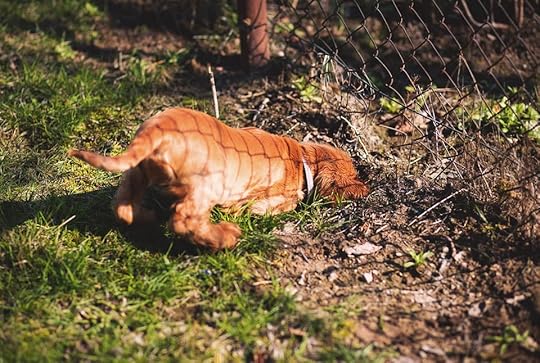
Published on August 14, 2018 04:30
August 7, 2018
caring for senior cats
 Last week, my two cats turned 13. They are not teenagers, they are seniors. In fact, it wasn’t long ago that cats were considered seniors at eight years of age, according to an article from Cornell University’s Veterinary College. Thanks to improvements in nutrition and veterinary medicine and other steps to keep cats healthy, today’s felines are considered seniors in the 12 to 14-year arena; so, my girls are right there.
Last week, my two cats turned 13. They are not teenagers, they are seniors. In fact, it wasn’t long ago that cats were considered seniors at eight years of age, according to an article from Cornell University’s Veterinary College. Thanks to improvements in nutrition and veterinary medicine and other steps to keep cats healthy, today’s felines are considered seniors in the 12 to 14-year arena; so, my girls are right there.These two sister cats, Murphy and Bailey, came into our lives when they were about 10 weeks old. Their mother was a stray found on my friends’ ranch; she was very pregnant when my friend Judy found her and, after setting a live trap, brought her into the house; a few days later, six kittens were born. The tortoiseshell, Bailey, and her long-haired black and white sister, Murphy, came to live with us while most of their siblings stayed at the ranch (someone else took the Persian-looking kitten).
These two cats have brought us great joy. Murphy is super-affectionate and loves our dogs. Bailey was very independent for most of her life, staking claim to closets and the basement as her places of privacy. However, at about 10 years of age, she began to seek more attention and affection from people, including those of us who feed her and clean her litter box. She is tolerant of the dogs, but never has been a true canine fan.
Now that they are older, we’ve noticed how they have slowed down. Arthritis has set in Bailey’s back and hind legs and she is pre-diabetic. Murphy has stomach issues now and then and therefore is given a kitty version of Pepto Bismol every few weeks.
I once had a cat who lived to be almost 19 – she was considered geriatric. Her later-year issues included kidney failure. However, there is a plethora of senior cat medical issues one must be alert for, including:ArthritisDiabetesKidney diseaseLiver diseaseDental diseases
Additionally, there are practical things we can do to help our aging cats. Those include:Giving easy access to litter boxes, food, and water.Providing warm and comfortable bedding.Creating steps to the window sill or installing easy-to-use climbing trees.Grooming gently.Seeing the vet regularly.
Just as people have a more difficult time as they age, so do our pets, including cats. Although felines seem to tolerate a great deal of pain, don’t stress them out by ignoring their difficulties and health issues. One of the greatest gifts we can give our aging kitties is the love and attention they desire in their golden years.
Learn more about helping your senior or geriatric cat one these websites:
http://www.thedrakecenter.com/services/cats/senior-cat-care
https://pets.webmd.com/cats/guide/aging-cats-qa#1
http://www.pethealthnetwork.com/cat-health/cat-checkups-preventive-care/caring-a-senior-cat-7-healthy-habits
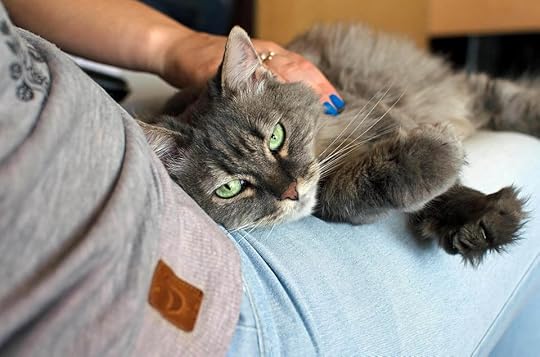
Published on August 07, 2018 05:00
July 30, 2018
dog - and cat - days of summer!
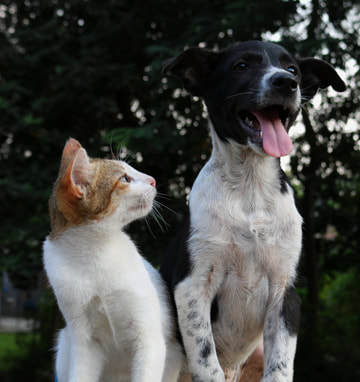 The third month, and often hottest time of summer (for the U.S. anyway) is upon us. We are in the midst of “The Dog Days of Summer” and this time of year generally sees little moisture, especially on the high desert plains where I live. With wildfires raging across many western states already, those of us who live in such locations dread the onslaught of August.
The third month, and often hottest time of summer (for the U.S. anyway) is upon us. We are in the midst of “The Dog Days of Summer” and this time of year generally sees little moisture, especially on the high desert plains where I live. With wildfires raging across many western states already, those of us who live in such locations dread the onslaught of August.But, there are reasons to celebrate, especially if you’re a pet parent. There are many special dog and cat days ahead, starting the end of July.
National Mutt Day & Spoil Your Dog Day
Tuesday, July 31 is National Mutt Day, also known as National Mixed-Breed Day. This special day recognizes, honors, and celebrates mixed-breed dogs. It was first established in 2005 by Colleen Paige, a celebrity pet and family lifestyle expert and animal welfare advocate. The goal of this day is to raise awareness of the numerous dogs in animal shelters waiting for homes, in particular mixed breed dogs.
The Humane Society of the United States (HSUS) estimates the number of pure-bred animals in America’s shelters is about 25 percent. That means the majority of dogs and cats waiting for adoption are mixed-breed.
People argue which is healthier: purebreds or mixed breeds? A study conducted in 2013 and reported on by the Institute of Canine Biology two years later indicates mixed breeds may have a slight health advantage over purebred dogs. A summary of the findings include:
The incidence of 10 genetic disorders (42%) was significantly greater in purebred dogs. Those include elbow dysplasia, cataracts, and bloat.The incidence of 1 disorder (ruptured cranial cruciate ligament; 4%) was greater in mixed breed dogs.For the rest of the disorders examined, they found no difference in incidence between mixed and purebred dogs. That includes several types of cancers, hip dysplasia, and patellar luxation.
An article on DogTime reminds us that it’s “the personality, not the pedigree” that matters in a companion animal. Even so-called “designer dogs,” like Labradoodles (mix between a Lab and a Poodle) and a Puggle (mix of pug and beagle) are truly “mixed breeds” of dogs.
August 10th is National Spoil Your Dog Day. Since that’s a Friday, why not take the day off work and spend a 3-day weekend with your special pooch? Perhaps a short trip you’ve not taken before or a trek into the woods, to the lake, or up a mountain? We can spoil our dogs in many ways – whatever you do, your pup will appreciate the extra attention!
Cats Have Their Days Too!
There are several special days for cats also coming up. On August 8, the world celebrates our feline friends during World Cat Day (also known as International Cat Day). First created in 2002 by the International Fund for Animal Welfare, the idea is to celebrate this popular pet.
We’re hardly the first to fawn over felines. Cats were idolized in ancient Egypt, even considered goddesses. The penalty for injuring or killing a cat back then was severe, according to the Cat Museum of San Francisco. Cats were used on ships to keep the rodent population in check and on farms for the same reason. There were times when felines weren’t popular, such as in Medieval Europe, when cats were associated with witches and heretics.
These days we may not treat our cats like goddesses or think of them as the devil’s kin, but some people certainly do spoil them while others keep them at arm’s length. Some may do the latter because of allergies while “cat people” dote on their feline friends as much as “dog-lovers” do their canine buddies. Cats can be seen dressed up for Halloween or a costume contest. Cats can be walked on leashes if trained at a young age. Cats offer a soothing purr when content, make good lap sitters (when they want to), and provide health benefits to their human friends, such as stress reduction and decrease in anxiety and depression. Cats are amazing creatures, so let’s celebrate them on their special day just as dog people do with their canine companions.
Friday, August 17 is Black Cat Appreciation Day. Black cats get a bad rap, again associated with superstitions and witchcraft. Like black dogs, black cats are less adopted in animal shelters. However, again like dark-colored canines, these regal creatures often have wonderful dispositions and make excellent companions.
Take time these next several weeks to honor the affection and gifts of cats and dogs. Perhaps adopt another furry friend or volunteer at your local animal shelter. You can also spread the word about the joys of these amazing animals, teaching others about the delightful companionship of pets.
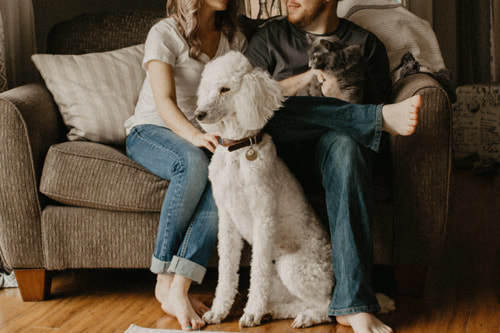
Published on July 30, 2018 10:32
July 24, 2018
Tips for keeping your pets home and safe
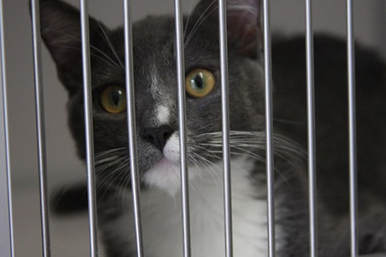 According to recent statistics, there are nearly 70 million stray animals in the United States, and only about six to eight million enter the nation’s shelters. Additionally, only two percent of stray cats are reclaimed by their owners compared to the (still low) number of 30% for dogs.
According to recent statistics, there are nearly 70 million stray animals in the United States, and only about six to eight million enter the nation’s shelters. Additionally, only two percent of stray cats are reclaimed by their owners compared to the (still low) number of 30% for dogs.July is Lost Pet Prevention Month. There are many ways to insure your pet’s safety and offer hope for a safe return in case it does become lost.
Keep your cat indoors. Outdoor and indoor-outdoor cats have a higher death rate due to being hit by cars or preyed upon by other animals, such as coyotes, foxes, and owls.Keep your dog indoors except for bathroom breaks, and if you do have your dog outside for a period of time, make sure your yard is appropriately fenced (many large dogs are able to scale chain-link and even wooden fences) and that all gates are securely locked. Not only can dogs escape the yard, but thieves can snatch them (there are many unscrupulous people seeking dogs to sell either to mills or dog-fighting rings – or simply sell to other people looking for specific breeds).Place a collar and id tag on your pet and make sure the contact information is up-to-date.Strongly consider having a microchip implanted by your veterinarian – and make sure this information is also updated.If your pet does become lost and your furry friend has a microchip, you can register your lost animal with the chip company (such as HomeAgain). Also, post to a community Lost and Found Facebook page if there is one, hang posters around the neighborhood, and report to your local animal control and animal shelter office(s).Purchase a GPS tracking device, such as Whistle, and have your pet wear it whenever outdoors. Such a locator can help find your pet if s/he slips out.Another helpful device is the Marco Polo, which doesn’t rely on cell service as others like the Whistle.
My husband and I have a variety of ways to keep our pets safe. We use the Whistle and Marco Polo on our dogs, especially when we travel, and all of our pets have microchips. Our cats are indoor animals with cat trees and other furnishings near windows to give them outdoor viewing opportunities. The dogs also live inside and when they are outside in our 6-foot wooden fence backyard for extended periods of time, we are with them. They also wear collars with ID tags.
Losing a pet is difficult. I have walked that road before, thankfully, with a happy ending. I also have friends whose pets have gone missing, one lost her dog for nearly three weeks before successfully finding her precious pup and bringing her home.
For your sake and the sake of your furry family members, do all you can to help them NOT become a lost pet statistic.

Published on July 24, 2018 05:00
July 18, 2018
grateful for pet rescue and adoption
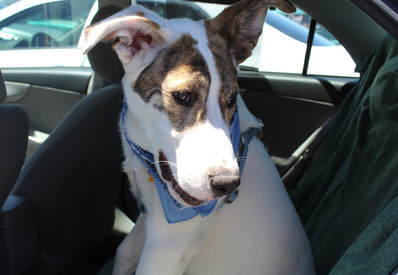 In honor of friends recently adopting animals and for those rescue groups which tirelessly work to help animals in need, I’ve composed a short story that I hope readers of this blog will enjoy. For truly, I am grateful for pet rescue and adoption!
In honor of friends recently adopting animals and for those rescue groups which tirelessly work to help animals in need, I’ve composed a short story that I hope readers of this blog will enjoy. For truly, I am grateful for pet rescue and adoption!They came from Canada to meet their new family member. Husband and wife rented an RV and made a holiday of traveling with their young son from Calgary to Sheridan, Wyoming. I drove 160 miles to bring them their new baby: a young male Great Dane. The Canadian family immediately fell in love with the pup, and they thanked me enthusiastically for being part of the team that brought this rescue dog adoption to completion.
I've been part of pet rescue transport for more than five years. Great Danes, Bull Mastiffs, English Springer Spaniels, Boston Terriers – various breeds, various rescue organizations, various adopters, all with a common theme: a story woven with compassion, love, friendship, and gratitude.
The adopters are grateful, the rescue groups are grateful, and the dogs are grateful.
Her name was Jazmine, and she reached my waist simply standing on all fours. This Great Pyrenees was abandoned in a desert where she gave birth to twelve puppies. Each one survived, thanks to a mother's protective instinct, and her tenacity to find food for herself despite the odds waged against her and her youngsters: intense heat, lack of shelter, minimal water and food. Odds were that none would survive. The scars on Jazmine's face spoke volumes to her possessiveness and perseverance. Those claw and bite marks were likely garnered from encounters with raccoons, coyotes, and other predators of young pups. By the time mother dog and babies were discovered and brought into rescue, Jazmine's giant frame was whittled to nearly nothing. After medical treatment for she and the babes, each dog found a new home. I was Jazmine's transport for 200 of her 1,200-mile journey. Thankfulness for the Good Samaritan who found the mother and puppies and gratitude for the rescue group that provided not only medical treatment but also a foster home for them, I accepted the request to help transport Jazmine, the final dog in the canine family to be accepted into the caring arms of a permanent human family.
As we walked around a rest stop adjacent to the interstate, this giant dog, though possessive of her babies to keep them alive, displayed nothing but gentleness toward me. The pony-sized dog leaned her head against my thigh and gazed at me with wondering brown eyes. I caressed the top of her white head and hugged her against me. Gratitude for my small part in getting this formerly abandoned, sweet dog to her new home many miles away overwhelmed me and tears filled my eyes. I could sense Jazmine's thankfulness, too, in addition to her uncertainty. It was like she “knew” she was going home. And she did. A few months later I received a photo of Jazmine with her new family – a man, woman, and two children laughing and smiling in a grassy backyard, hugging their new companion ...and Jazmine with a doggie grin, licking a child's face as she joined in the joy.
To be part of such unions, to play a small role in saving companion animals' lives, to find true purpose in such endeavors – gratitude is one of the many emotions I experience. I receive thanks from all sides, from the rescuer and from the adopter as well as from the dog. But, it is I who is truly grateful to have a role in bringing lives together, in helping to forge a family, bringing four-footeds and two-footeds into a friendly, caring relationship that can last a lifetime.
Theo, a Boston Terrier, needed transport through my home state of Wyoming. His new family lived in Montana, and, like the family from Canada, this couple was willing to drive a fair distance to meet me and their new furry friend. We rendezvoused at the same location where I'd met up with the Canadian couple who adopted the Great Dane, a three-hour drive for me and a five-hour drive for the Montana adopters. Theo sat up straight in the passenger seat of my car, in anticipation and expectation. When we arrived at the tree-lined rest stop off the interstate, he placed his small paws on the car's dashboard, looking around as his little black and white body wiggled in excitement. His instinct seemed to inform him this is where he was meeting his new family. He let out a happy YIP and looked at me with black eyes before gazing out the windshield again and then also the passenger-side window. I took him out of the car for a short walk, and not long thereafter a SUV with Montana license plates pulled in behind my car. Theo watched intently as a pregnant woman and then a man about 30 years of age stepped from the vehicle. Theo stood on his hind legs, his front paws dancing with excitement. The couple laughed. The man bent down, raised Theo into his arms, and then he and his wife hugged their new furry family member. Prior to leaving for Montana with their adopted dog, the man and woman thanked me for being part of Theo coming into their lives. The small dog licked my hand before getting into the SUV with his new human family. The large smile stayed on my face during the three-hour drive back home.
Fairy-tale endings may not exist for all people or all pets, but for the rescue animals I transport, there is a happily-ever-after – love, comfort, dedication, family – and I’m grateful to be part of that ending.
I'm grateful to be part of their happily-ever-after stories. And to have ones of my own.

Published on July 18, 2018 08:23
July 11, 2018
visiting national and state parks with your pets
 Summer visitation at many national and state parks is in full swing. These places remain popular destinations for individuals and families. I recently returned from the Yellowstone National Park area, one of my favorite places in the U.S. Each year nearly four million people trek by automobile, motorcycle, bicycle, and RV through Yellowstone; many also hike the trails and visit the famous geyser basins, such as Norris and Old Faithful.
Summer visitation at many national and state parks is in full swing. These places remain popular destinations for individuals and families. I recently returned from the Yellowstone National Park area, one of my favorite places in the U.S. Each year nearly four million people trek by automobile, motorcycle, bicycle, and RV through Yellowstone; many also hike the trails and visit the famous geyser basins, such as Norris and Old Faithful.There are rules about pets when it comes to taking them in national, as well as state parks. Before embarking upon such a journey with your furry friend, review the pet policies.
National Parks and Pets
Pets are welcome in America’s national parks. However, there are some rules that travelers with pets should be aware of. Those include:Service animals should be clearly marked that they are working animals.Pets are prohibited in the backcountry of most western national parks, including trails, and in Yellowstone, pets are not allowed on boardwalks around the thermal areas.Do not leave your pet unattended or tied to an object – ‘unattended’ includes in the vehicle.Clean up after your pet.Always keep your pet under control, on a leash or in a crate.You may have your pet in the ‘front country’ of the park, including campgrounds, in parking areas, and within 100 feet of roadways.
In addition to providing a wonderful respite for humans, America’s national parks are home for many species of wildlife; in Yellowstone and Grand Teton, for example, these include bears and bison. Pets running loose or hiking with owners in the backcountry can harm wildlife – or be harmed themselves. Therefore, the National Park Service, recognizing that many people travel with pets, accommodates our four-footed companions in certain areas while prohibiting them in others, for the safety of both pets and wildlife.
Speaking of accommodations, are there places inside the parks that allow people to stay with their pets other than the campgrounds? In some cases, yes. Hotel accommodations in Yellowstone, for example, are not pet-friendly, but a few of the cabin facilities inside the park do allow pets. Additionally, just outside the national parks’ boundaries are gateway communities in which many hotels can be found, and many of those are pet-friendly. Prepare in advance to review the communities’ lodging options and investigate ahead of time whether pets are welcome. Look and book in advance! There are many great resources for finding pet-friendly lodging, including GoPetFriendly.com and BringFido.com. Rover.com provides a listing of pet sitters in various communities, which can be a good option if you’re staying in a town near a national park and you want to take a day-trip for hikes, horseback riding or other activities that don’t accommodate pets.
Although the national parks have similar guidelines because they are federal entities, different parks may have different pet policies. To learn about the regulations in the park you’d like to visit, log onto the National Park Service’s website at www.nps.gov, find the park you’re interested in, and review that park’s pet particulars. You can also visit this Travel Channel site to read an article about national parks that are pet-friendly and those not as much so: https://www.travelchannel.com/interests/national-parks/photos/exploring-our-national-dog-parks.
State Parks and Pets
In June, I spent a week in Oregon visiting family and driving along the Pacific Coast Highway. I was pleasantly surprised to find two things: (1) many Oregon state parks have no (or minimal) entrance fees; and (2) pets are welcome at most Oregon state parks and beaches, including some trails. Therefore, I visited many of these places with my traveling companion, Jeremiah the Shih Tzu.
All states differ in their pet policies when it comes to visiting state parks. Wyoming, where I live, for example, allows dogs to be on leashes up to 10 feet in length (many other states limit the length to six feet). A person is also able to leave a pet unattended for an hour (although I personally would not do so).
So, know before you go! Visit the parks’ websites for the state (or national) park you want to visit before taking your pet on the trip.
May your adventures with your furry friend be enjoyable – happy traveling!

Published on July 11, 2018 07:39
July 2, 2018
summer safety reminders
July is upon us -- half the year zipped by like an Indy 500 racer. With this new month comes enjoyable activities, like swimming, hiking, camping, picnics, travels, and playtime in the park. July also brings safety concerns, such as pests (think ticks and mosquitoes), rattlesnakes, heat exhaustion, and thunderstorms. And, this week, add fireworks to the list.
People and pets can be harmed by fireworks as well as from overheating and severe storms. Pets also become frightened, and many lost, due to the noise from fireworks. Extreme temperatures have plagued the United States already, and forecasts in various regions call for more intense heat -- and July has just began. The infographics below remind us pet parents to keep our beloved furry friends safe this season.
Read some great summer safety tips on Petfinder.com: https://www.petfinder.com/pet-care/summersafetytips/.
Also, here are links to two blog posts I wrote last year regarding pets and heat and pets and fireworks.
http://www.gaylemirwin.com/blog/summer-carsfireworks-pets-can-tragedy
http://www.gaylemirwin.com/blog/5-tips-for-dealing-with-summers-heat
Have an enjoyable and safe 4th of July! And, remember: don't leave children or pets in cars this summer!

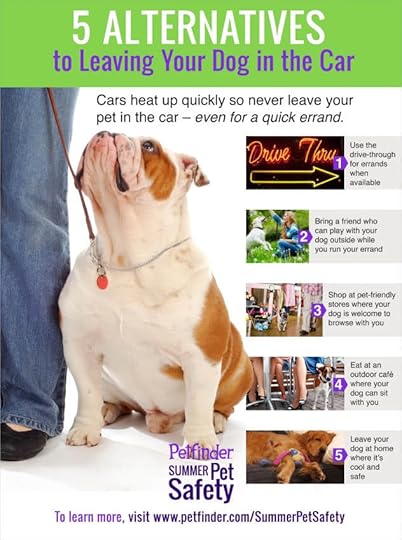
People and pets can be harmed by fireworks as well as from overheating and severe storms. Pets also become frightened, and many lost, due to the noise from fireworks. Extreme temperatures have plagued the United States already, and forecasts in various regions call for more intense heat -- and July has just began. The infographics below remind us pet parents to keep our beloved furry friends safe this season.
Read some great summer safety tips on Petfinder.com: https://www.petfinder.com/pet-care/summersafetytips/.
Also, here are links to two blog posts I wrote last year regarding pets and heat and pets and fireworks.
http://www.gaylemirwin.com/blog/summer-carsfireworks-pets-can-tragedy
http://www.gaylemirwin.com/blog/5-tips-for-dealing-with-summers-heat
Have an enjoyable and safe 4th of July! And, remember: don't leave children or pets in cars this summer!


Published on July 02, 2018 10:00



